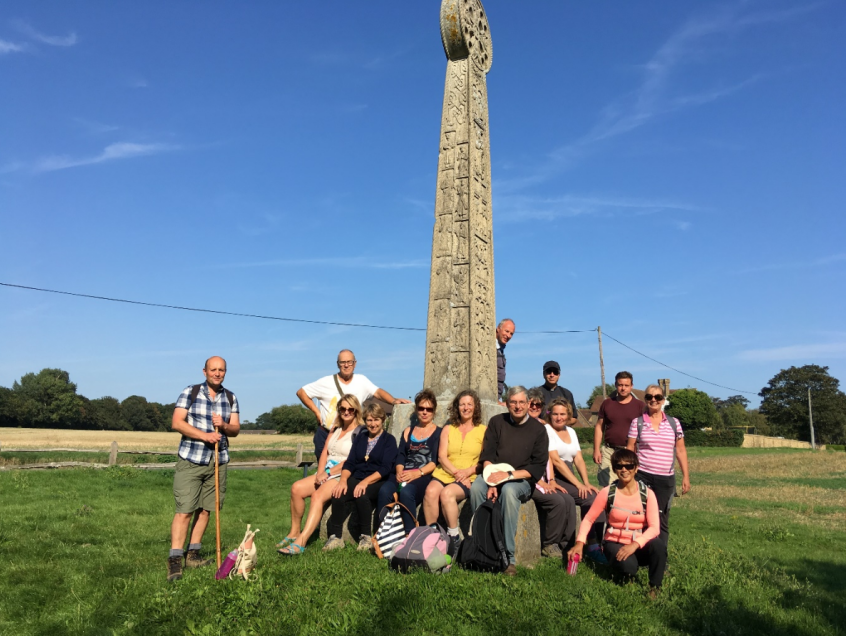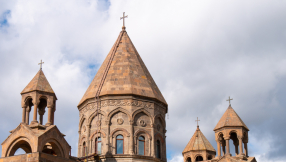
Everyone seems to be going on pilgrimage. The latest statistics from the Santiago Pilgrim Office show that over three hundred thousand pilgrims walked at least 100 km to the Shrine of St James in 2018 and over six thousand were from Britain. In Italy the Via Francigena is increasingly popular. It is now possible to walk from Oslo to Trondheim along St Olav's Way and here in Britain there are many new pilgrim routes including the St Thomas Way from Swansea to Hereford.
Motivations are mixed. In Spain about half of pilgrims walk the Camino for non-religious reasons. The Green Pilgrimage Project promotes pilgrimage as an environmentally friendly form of tourism and the NHS promotes walking for health reasons.
While Christian Pilgrimage has a decidedly Catholic flavour, other churches are getting involved. St Olav's Way in Norway is supported by the Lutheran Church and Canterbury Cathedral has a program of welcome for walkers along the Pilgrim's Way.
Having been a long-distance walker for decades I appreciate above all, the change of perspective that accompanies arriving on foot. In place of the stress of driving, walkers arrive tired but happy, ready to engage with the local community and the local attractions.
I have noticed this change through my work on the Augustine Camino, a 70 mile route from Rochester to the Shrine of St Augustine of Canterbury in Ramsgate. The route is full of history and Christian heritage.
And nothing opens the mind to other Christian perspectives so much as the discussions one has along the way. For me these have included the different understandings of the Real Presence, the difference between worship and veneration and the purpose of rood screens to name a few (which in case you're wondering, are the ornately carved wooden partitions often seen in medieval churches separating the chancel and nave).
In a world where knowledge of Christianity is rapidly retreating, we Christians are finding more in common than we might previously have thought. For this reason I have made the Augustine Camino a "full fat" pilgrimage including visits to shrines and monasteries, churches Catholic and Anglican.
The architect of Big Ben, Augustus Pugin who built St Augustine's, thought of Gothic architecture as Catholic architecture. However, after a few days along the route it becomes clear that his influence was much wider than that. In fact one of the special joys of pilgrimage is the discovery of stunning works of art hidden away in sleepy villages, barely visited by the general public.
There are two churches that particularly come to mind. One is St Andrew's church in a little village called Wickhambreaux. It contains the most amazing Art Nouveau stained glass window of the Annunciation which was reportedly the first European church commission for Tiffany's of New York.
The other is the chapel at St Nicholas Hospital, Harbledown. This was founded by Archbishop Lanfranc as a leper hospital as evidenced by the sloping floor which allowed the church to be easily washed down after Mass. It also has a couple of medieval wall paintings that were discovered under layers of whitewash. Gabriel's wings are coloured with lapis luzuli which would have cost more than gold at the time it was painted.
The most important benefit of pilgrimage is of course the opportunity it presents for spiritual encounter. The modern world allows us to fill every minute with distractions. A few days, mostly out of mobile range, with the only concern being what to have for lunch, soon changes that. Walking opens us up to new perspectives. Pilgrimage makes those perspectives Christian. The special delight is that you have no idea what they will be until you take that first step and become a pilgrim.
Andrew Kelly is the founder of the Augustine Camino and a keen walker. Find out more about the Augustine Camino at http://augustinecamino.co.uk/













